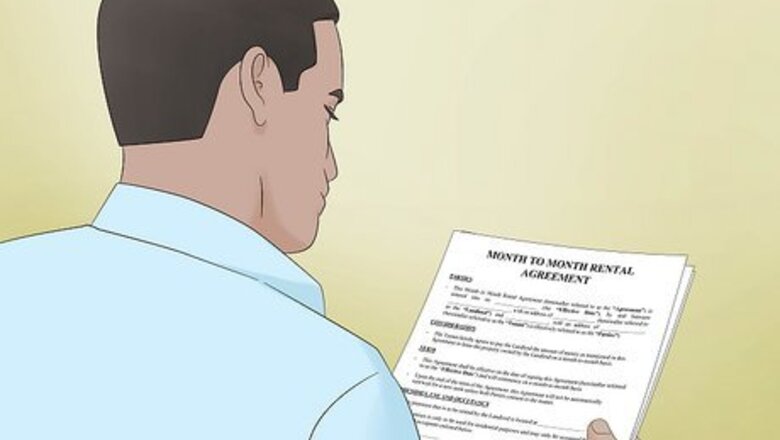
views
Reading the Lease
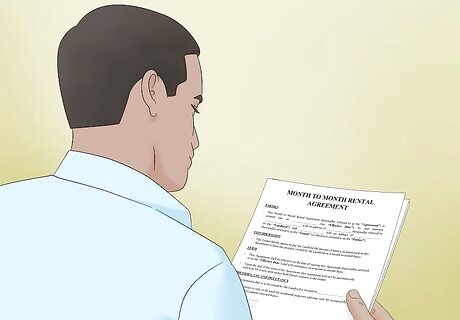
Check the length of your lease. Some leases provide easy and efficient ways to terminate your lease without having to demonstrate the existence of a serious mold problem. The most common example is when your lease is structured as a month-to-month tenancy. In most U.S. states, when your lease is month-to-month, you can get out at any time by providing 30 days notice. Therefore, if your lease is set up as a month-to-month tenancy, simply give your landlord the required notice and move out.
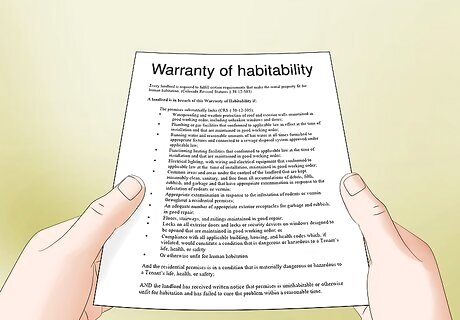
Look for habitability language. Most U.S. states will not allow you to waive the implied warranty of habitability, which requires landlords to maintain their properties in a livable condition. Therefore, in general, any provision in your lease stating you waive this warranty will be held unenforceable as it is against public policy. However, some states may still allow you to waive the implied warranty if it is explicitly stated in your lease. Therefore, if you live in a state where you can waive the implied warranty (check with your lawyer to find out the law in your state), and it is in your lease, you may not be able to use this law to terminate your lease.
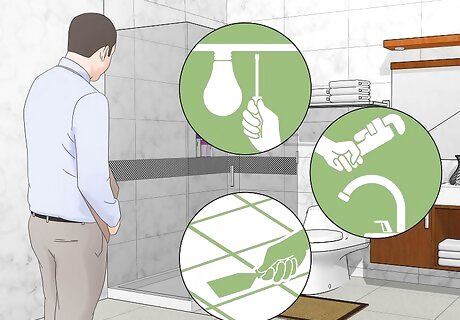
Analyze the landlord's duties. In general, your landlord must perform the necessary maintenance to keep your unit livable. In addition, your lease will set out what duties the landlord has for making smaller repairs. However, if you, as the tenant, fail to fulfill your own responsibilities, the landlord may not be required to fix conditions, even if they make your unit uninhabitable.
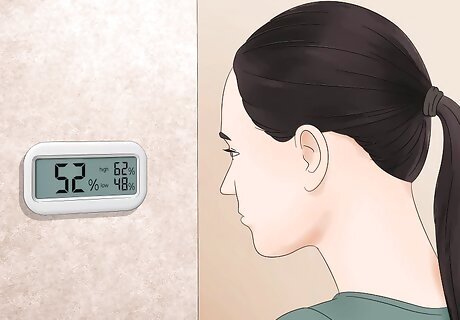
See what your duties under the lease are. You are required to take reasonable care of your rental unit, which means you should keep them clean and undamaged. Most leases will state that you need to keep the premises sanitary and that you need to dispose of trash and other unwanted items in a reasonable way. All of these things, if you fail to do them, may lead to a mold problem. If your actions are the cause of your mold problems, you may have a problem terminating your lease.
Analyzing the Implied Warranty of Habitability

Find your state's statute. Most, if not all, U.S. states have a state statute laying out an implied warranty of habitability that runs with every residential lease, regardless of whether it is explicitly mentioned in the lease or not. The implied warranty of habitability requires landlords to maintain their properties in a livable condition, which means the property must be fit for human occupation. Generally, state laws also require landlords to substantially comply with housing and building codes that materially affect your health and safety. To find your state's statute, do an internet search for "[your state's] implied warranty of habitability". In addition, if you need help, you can go to your local law library and ask an employee for help.
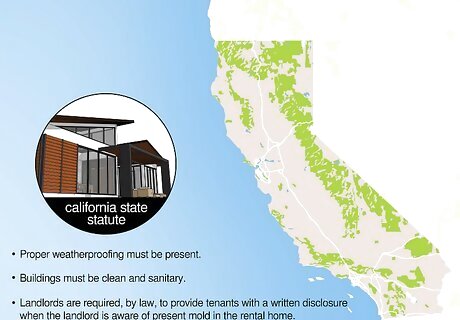
Determine the boundaries of habitability. Most mold problems will fall within the statement in the law that requires landlords to substantially comply with codes that affect your health and safety. State statutes may provide explicit examples of what is considered uninhabitable, but no list is going to be exhaustive. In addition, courts applying the implied warranty of habitability have created boundaries regarding what it considers uninhabitable. Each state will have different boundaries and some states may be more tenant friendly or more landlord friendly. In addition, if you are the cause of the uninhabitable condition, you will not be able to use the implied warranty of habitability to your advantage. In California, for example, their state statute lays out various conditions that, if present in your rental unit, might make it uninhabitable. While mold is not explicitly mentioned in the statute, it does mention that proper weatherproofing must be present. Because most mold arises in damp environments, the underlying problem of poor weatherproofing might make your unit uninhabitable. Also, California's state statute mentions that buildings must be clean and sanitary. Mold might be a condition that makes your building unclean and unsanitary. Lastly, experts in California have stated that the presence of mold would most likely make a unit uninhabitable and affect your health and safety.
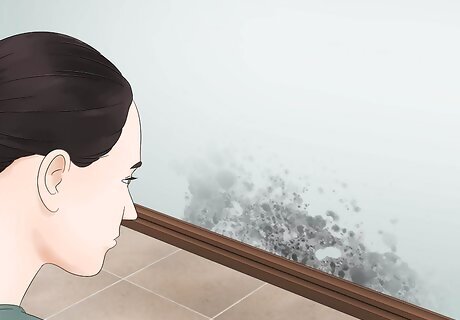
Inspect your residence. Once you know that mold is probably a condition that can affect habitability and health and safety, you will need to inspect your residence for the presence of mold. Apart from doing this so you can demonstrate the problem, you will also need to do this to assess the seriousness of the mold infestation. This is the case because, in order to use the implied warranty of habitability to break a lease, the mold must seriously affect your ability to live in the unit and it must be a substantial defect. The implied warranty of habitability is not breached if the mold problem is minor and does not affect your ability to occupy the unit safely and healthily.
Gathering Evidence Regarding Moldy Conditions
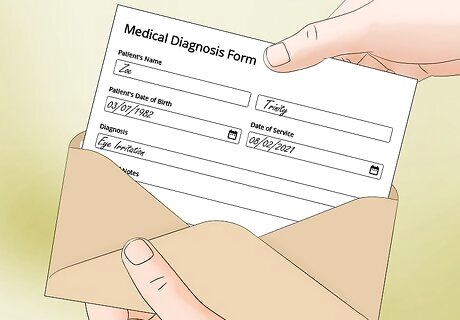
Get notes from doctors regarding the health dangers you face. One of the best ways to demonstrate a substantially deficient living condition that affects your health and safety is to go to the doctor and get an official diagnosis. As soon as you notice the moldy conditions and you feel as though it is affecting your health, visit the doctor. Let them know that you live with mold and ask them to make sure your health is okay. If it is not, ask for your medical records so you have evidence of the health concerns you face because of the mold. Mold can cause you to have nasal stuffiness, eye irritation, wheezing, or skin irritation. If you are allergic to mold, the reactions could be even more serious.
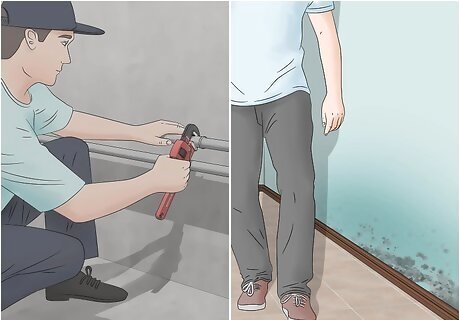
Have professionals come and check out the problem. Call your county health department and/or your local building inspector and ask them to conduct a review of your unit. Some states will respond to these requests while others will not. If your state will not review your unit, find a reputable private company that conducts similar reviews. Once the review is complete, make sure a report is created that documents the living conditions, including the mold infestation. You will use these reports down the road in case you have to prove the existence and severity of the problem to your landlord or to a court.
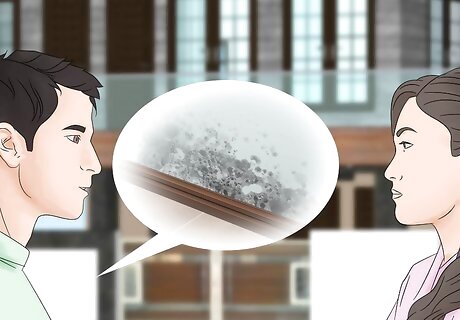
Obtain statements from witnesses. Talk with other tenants in your building, past tenants, maintenance people, and mold professionals and get their statements. Current and past tenants may have similar problems, or may have had problems in the past. They might be able to tell you about their experience, their health problems, and how the landlord dealt with it. Environmental professionals will be able to give you a statement about the serious nature of the mold infestation and how that mold can affect the livability of your unit. Maintenance workers in your building may be able to tell you about their policies for fixing these issues, which might come into play if your landlord fails to adequately fix the mold problem. When you take witness statements, make sure you get their full name, address, phone number, email address, and driver's license number. This information will help you reach out later if it becomes necessary.
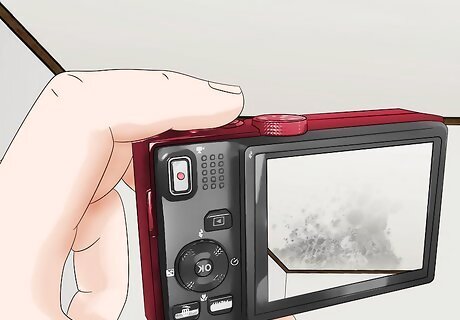
Take photos and videos of the moldy conditions. To ultimately prove the mold in your unit has made it unlivable and unhealthy, you need to take photos and videos to demonstrate the conditions. Before you take videos and pictures, clean your unit to make sure you present it in the best light possible. This might become key if your landlord claims you were a bad tenant and caused the uninhabitable condition. Photograph the entire unit and do so from multiple angles. In addition, use rulers to indicate how large the mold is. If it is safe to do so, take samples of the mold as well. To take a sample, put on a pair of rubber gloves and a mask to protect your mouth and hands. Using a piece of clear scotch tape, press the sticky side into the moldy area. Peel off the tape by pulling on the edges. Place the sample in a zip lock bag by sticking the piece of tape to the side of it. Do not fold the tape in half. Close the bag and label it.
Talking with a Lawyer

Get recommendations from friends and family. Once you have gathered evidence on the moldy conditions, consider hiring a lawyer. While a lawyer is not necessary to break your lease for a violation of the implied warranty of habitability, they will certainly not hurt. A qualified housing lawyer will help you review your evidence, draft notice letters, and comply with the law. The lawyer will also be able to help you understand whether your situation rises to the level of being able to break your lease. Start the search process by asking family and friends if they know any lawyers. At this point, take any recommendation they have, even if the lawyer does not practice housing law. You can always call these lawyers and ask if they know lawyers who can handle your type of case.
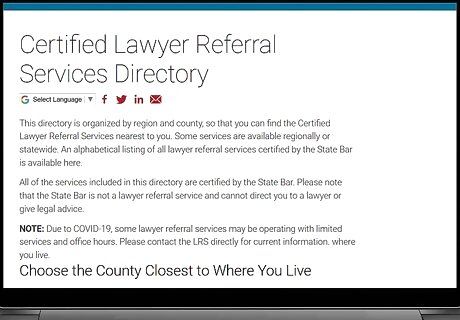
Contact your state bar's lawyer referral service. If you cannot get any good recommendations, visit your state bar's lawyer referral service website. If you do not have access to the internet, call your state bar association. After answering a few general questions about your legal issue, you will be put in contact with various qualified lawyers in your area.
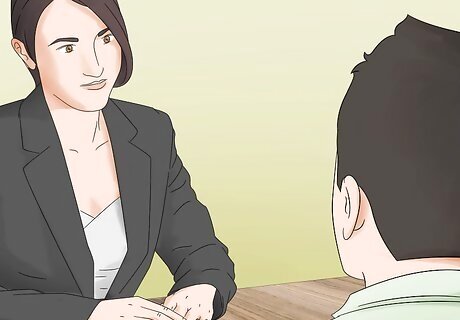
Take part in initial consultations. Once you have a list of two or three lawyers you think you will like, contact them and ask to sit down for an initial consultation. An initial consultation allows you to assess each lawyer, taking into consideration their knowledge and demeanor. It also gives the lawyer an opportunity to assess whether they want to represent you. Before you go to each consultation, make sure you gather any and all documentation you have regarding the mold problem. This will include your photos, videos, witness statements, professional reports, and medical records. This information will help the lawyer assess your case. When you go to the meeting, make sure you talk about their professionalism and ability to represent you. Feel free to ask how long they have been practicing and how comfortable they are with lease terminations and the implied warranty of habitability. Be sure to ask each lawyer about their fees and get an estimate of how much the overall representation would cost.
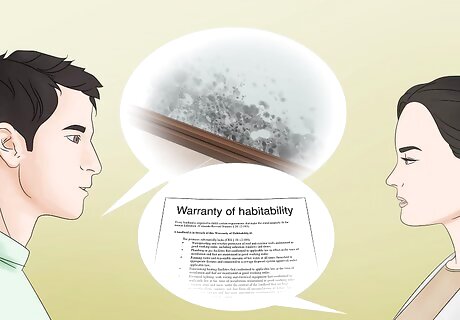
Discuss your case. As a part of each initial consultation, make sure you discuss your case in as much detail as possible. Ask the lawyer if they think you have a good case for a breach of the implied warranty of habitability. In addition, ask if there is other evidence that would be helpful to make your case. All of this information will help you determine how to proceed with your mold problem. While you will want to extract as much information as possible, the lawyer is unlikely to give you too much. In reality, the lawyer wants you to hire them before they really get into your case.

Hire a lawyer if you think it is necessary. After you conduct all the initial consultations, sit down and think about what you learned. If you think you got enough information to proceed with your lease termination, you might consider moving forward without hiring a lawyer. However, if you think a lawyer could help you, you should hire the lawyer that you felt most comfortable with. In almost every scenario, a lawyer will be beneficial. If you proceed without one and you are found liable for improperly terminating your lease, you might end up having to pay damages.
Providing Notice to Your Landlord
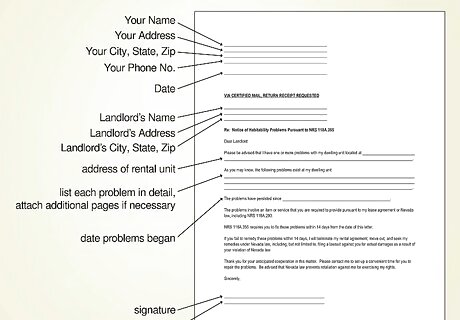
Draft a comprehensive notice letter to your landlord. If you think you have a valid case where mold is making your rental unit uninhabitable, you must give your landlord notice of the failure to maintain your unit in a habitable condition. While some states do not provide a time limit for you to provide notice, other states (e.g., Colorado) require you to provide notice to your landlord within 30 days of when the uninhabitable condition arises. Your notice letter must be detailed and provide the following information: Your name, address, and contact information The date you are drafting and sending the notice A detailed description of the mold problem that has led to your unit being uninhabitable A request that the mold condition be repaired within the time allowed by law A statement letting the landlord know that they can enter your unit to fix the problem Your signature
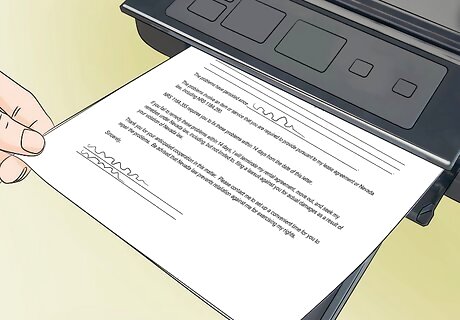
Keep copies of everything for your records. Once you draft your notice, make copies. Keep them for your records in case you need them in the future.
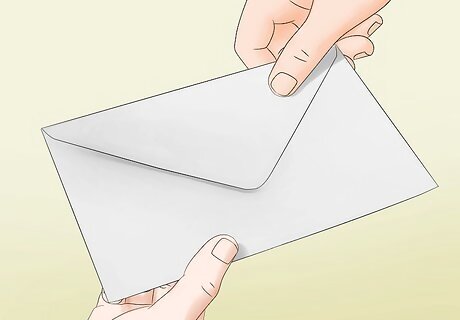
Give your landlord the notice letter as prescribed in the lease and/or by law. All notice letters should be sent to your landlord by certified mail, return receipt requested. This way, you have evidence that you sent the notice. In addition to mailing the notice letter, you also need to make sure you are meeting any notice requirements set out in your lease. For example, some landlords may require you to drop off notice at the landlord's office. To be safe, mail a copy to your landlord and drop one off.
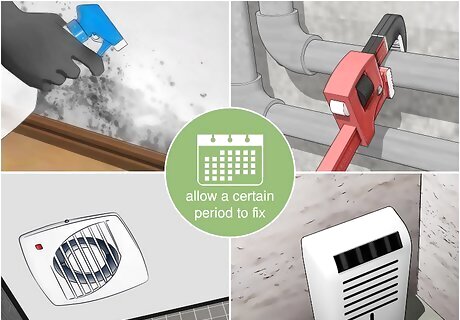
Provide your landlord with a reasonable opportunity to fix the mold problem. Each state will require you to allow a certain period of time for your landlord to fix the problem. The amount of time you have to allow will depend on the severity of the problem. For example, in Nevada, you have to allow your landlord 14 days to fix the problem. In Colorado, you must provide five days. In addition, a lot of states will limit your ability to terminate your lease, even if the problem is not resolved within the period allowed, so long as the landlord is making a good effort within that time to fix the problem. Your notice letter will tell the landlord how long they have to remedy the mold problem before you exercise your right to terminate the lease and vacate.
Terminating the Lease
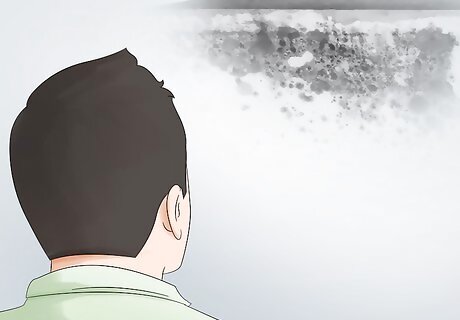
Determine whether the mold problem persists. If the mold problem persists past the allotted time and no effort is being made to fix it, or if the mold problem is not fixed adequately, you should start the lease termination procedures. Before notifying the landlord of your intentions, take more pictures and gather more evidence so you can prove that no real progress was made after you gave your landlord notice of the problem.
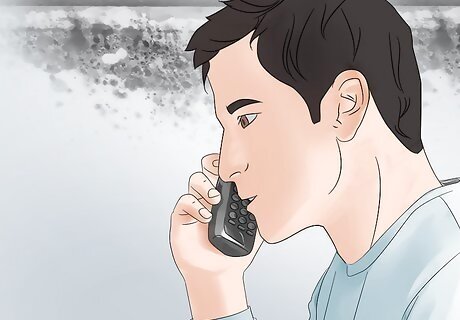
Notify your landlord of your intention to terminate the lease. Most states do not require you to provide notice to your landlord before you terminate your lease and vacate the property if you are doing so because of a breach of the implied warranty of habitability. For example, in Nevada and Connecticut, no notice is needed. With that said, providing notice is never a bad idea and will help you keep records of everything you did. This notice should also indicate the reason you are vacating and that you fully expect the landlord to return any prepaid rent and any security deposit. If the law does not require you provide this notice, you should provide it when you give up possession of the property (i.e., when you turn over your keys).
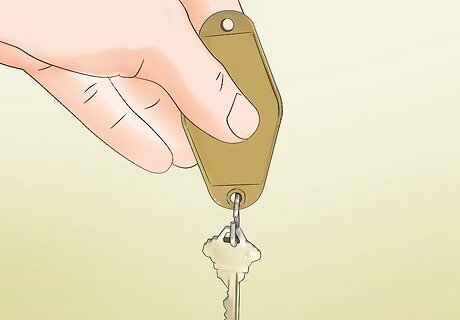
Give up possession of the property. When you are ready to terminate your lease and vacate, move out of the property and return any keys. Do not keep anything that does not belong to you.

Make sure the landlord returns all prepaid rent and the security deposit. When you relinquish possession of your property, make sure your landlord is aware that you expect any prepaid rent and security deposit to be returned to you. Be sure you provide your landlord with a forwarding address so they can send you the check. In most states, your landlord will have 30 days to account for everything and make payment to you.
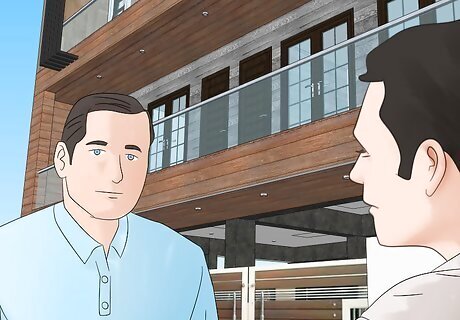
Defend your decision if necessary. In some circumstances, your old landlord may come after you claiming you did not have the legal ability to terminate based on the implied warranty of habitability. If this happens, you should be in good shape because of all the records you kept and evidence you gathered. If you receive notice that your landlord is suing you, hire a lawyer or use the lawyer you hired before to represent you.


















Comments
0 comment